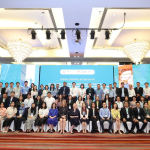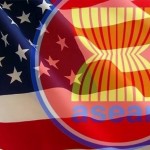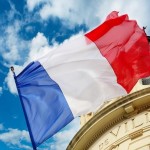Total number of posts 463.
In the last five days of July 2025, intense clashes between Thailand and Cambodia erupted along the border, particularly around the Ta Muen Thom temple. The fighting escalated, causing significant casualties and property damage, and forcing the evacuation of more than 260,000 people. Ultimately, through international mediation, both sides agreed to an “immediate and unconditional” ceasefire, ending this round of hostilities. However, many challenges remain in ensuring lasting peace.
Developments in the Thailand - Cambodia Conflict
From 24 to 28 July 2025, intense clashes broke out between Thailand and Cambodia along the border near the Ta Muen Thom temple, after both sides accused each other of firing the first shots. The conflict quickly escalated, involving rocket artillery, tanks, drones, and even Thailand’s F-16 fighter jets, resulting in at least 38 deaths and forcing the evacuation of more than 260,000 civilians.
As ASEAN Chair in 2025, Malaysia - under the leadership of Prime Minister Anwar Ibrahim - swiftly took on the role of mediator in the Thailand - Cambodia border conflict. Just one day after the fighting began, Mr. Anwar proposed a ceasefire and convened talks in Kuala Lumpur on 28 July, attended by Cambodian Prime Minister Hun Manet and Thailand’s Acting Prime Minister Phumtham Wechayachai.
Thanks to its neutral stance, absence of direct disputes, diplomatic finesse, and support from ASEAN foreign ministers, Malaysia helped the two sides reach an unconditional ceasefire agreement effective from the night of 28 July. The deal included an immediate cessation of hostilities, the resumption of military communication, and a commitment to continue negotiations. This success reflects the combined strength of Malaysia’s mediation role and ASEAN’s consensus in promoting a peaceful solution and preventing further escalation.
Nevertheless, tensions and mistrust persist. Prime Minister Anwar Ibrahim stated that Malaysia is assisting in monitoring the Thailand - Cambodia ceasefire via satellite, coordinated remotely by Malaysian defence attachés in cooperation with other ASEAN countries. Malaysia is also ready to send a military delegation to the border area if requested by both parties; however, any on-site military deployment will depend on the outcome of the Thailand–Cambodia Joint Border Committee meeting to be held in Malaysia this week. Mr. Anwar stressed that the situation remains under control, albeit highly tense and sensitive.
(Source: Asia Society Policy Institute)
From Viet Nam’s perspective, we express deep concern over the escalating tensions along the Thailand–Cambodia border, and call on both countries to exercise maximum restraint, refrain from the use of force, and resolve all differences through peaceful means, in accordance with international law, the Charter of the United Nations, the ASEAN Charter, and the Treaty of Amity and Cooperation in Southeast Asia (TAC), in the spirit of ASEAN friendship and solidarity, for the long-term interests of the region.
In addition, Viet Nam welcomes the immediate and unconditional ceasefire agreement reached by Thailand and Cambodia, viewing it as an important step towards de-escalating tensions and restoring peace, stability, and security in the region. Viet Nam trusts that both sides will fully and earnestly implement the agreement, and continue dialogue to find a fundamental solution in the spirit of ASEAN unity. Deputy Prime Minister and Minister of Foreign Affairs Bùi Thanh Sơn affirmed Viet Nam’s readiness to actively support the two countries in implementing the ceasefire agreement and promoting cooperation on the basis of ASEAN friendship and for the common interests of the entire region.
Impacts on Economic, Trade, and Investment Relations between the Two Countries
Since the escalation of the Thailand–Cambodia border conflict on 24 July 2025, Thai businesses operating in Cambodia have implemented a series of emergency response measures, including adjusting business plans, cancelling events, increasing stockpiles of goods, and preparing contingency plans to maintain operations. The conflict broke out at 8:30 a.m. near the Banteay Chhmar temple complex (Surin Province) and quickly spread to six other border points - Ta Muen Thom, Ta Krabey, Chong Bok, Preah Vihear, Chong An Ma, and Chong Jom - resulting in civilian casualties on the Thai side. The Royal Thai Air Force deployed F-16 fighter jets to strike rocket launch sites and destroy several Cambodian command centres.
At the same time, Thailand downgraded diplomatic relations and closed all border checkpoints, disrupting bilateral trade valued at 174.5 billion baht in 2024 (including 141.85 billion baht in exports and 32.7 billion baht in imports through the five main border crossings). Thai investments in Cambodia amounted to USD 3.785 billion, employing over 62,000 Cambodian workers, primarily in the agricultural sector.
(Source: Getty Images)
Major business associations such as the Thai - Cambodian Business Council and the Federation of Thai Industries (FTI) expressed concerns over the safety of businesspeople and the risk of attacks on Thai assets, urging both sides to engage in dialogue promptly to avoid escalating tensions. Several major corporations have made significant operational adjustments: Index Creative Village canceled all 2025 events; Carabao Group increased its stockpiles from 40 million to 120 million cans per month to ensure three months of consumption; Thai President Foods (Mama) maintained production at its factory, which holds an 80% market share in instant noodles in Cambodia. Banks such as SCB and Kasikornbank implemented plans to safeguard personnel, maintain liquidity, and ensure business continuity, while some border branches temporarily closed. The tourism and aviation sectors have been visibly affected as the Ta Muen Thom and Ta Krabey temples were closed, tourist arrivals and hotel bookings in Sa Kaeo border districts dropped sharply, and the Thai Embassy in Phnom Penh advised citizens to return home.
The escalation of tensions has led to stricter border movement controls, including reduced opening hours at border checkpoints and shortened stays from 60 days to 7 days. These measures pose direct risks to bilateral trade and labor flows. Thailand maintains a trade surplus of 109.2 billion baht with Cambodia and relies on approximately 500,000–800,000 Cambodian workers, who make up as much as 80% of the agricultural labor force in some border provinces such as Chanthaburi. Irregular border closures and reopenings not only threaten productivity and increase operational costs in Thailand but also impact Cambodia’s import-dependent sectors, including construction materials, petroleum, electricity, and internet services.
Beyond trade and labor, bilateral investment and tourism face long-term risks. The extensive presence of Thai businesses in Cambodia in sectors such as garments, hospitality, petroleum, and coffee chains means that any prolonged disruption could reduce profits, weaken investor confidence, and cause economic shortfalls for Cambodia. Economists warn that a complete border closure could result in losses of around 10 billion baht per month and threaten regional economic integration as well as international investor confidence if the conflict persists.
According to Thai Finance Minister and Deputy Prime Minister Pichai Chunhavajira, evacuation costs and property damage in the first five days of conflict already exceeded 10 billion baht (US$307.88 million), while the ultimate economic impact is expected to be even greater. The Thai government has prepared an initial relief budget package worth 25 billion baht (US$771 million).
Additional Information
1431: The weakened Khmer Empire was attacked by Siamese forces; the Khmer king retreated to Phnom Penh.
1794: Siam annexed the regions of Sisophon and Battambang.
1863: Cambodia became a French protectorate to safeguard its remaining territory.
1904-1907: France and Siam signed border treaties; the 1907 map drawn by France placed the Preah Vihear Temple within Cambodian territory.
1941: Thailand occupied the Preah Vihear Temple during World War II.
1945: Thailand returned the temple to France; Cambodia gained independence in 1953.
1954: Thailand reoccupied Preah Vihear after France’s withdrawal.
1959-1962: Cambodia brought the case to the ICJ; the Court ruled that the temple belonged to Cambodia, based on Thailand’s implicit recognition of the 1907 map for nearly 50 years.
2008: Cambodia registered the Preah Vihear Temple as a UNESCO World Heritage Site.
2011-2013: Cambodia filed a second case at the ICJ; the Court granted Cambodia sovereignty over the area surrounding the temple. Thailand did not recognize the ICJ ruling, and border tensions persisted with periodic escalations.
Overall, before the outbreak of armed conflict, the Preah Vihear Temple dispute had little impact on Thailand–Cambodia economic relations. Both countries sought to confine tensions to the border area while maintaining and promoting bilateral trade, as evidenced by trade fairs and economic projects. Cambodia pledged to ensure the safety of Thai investors and developed special economic zones to attract investment from Thailand.
From 2008 to 2012, despite border tensions and firm actions from the Thai government, economic cooperation continued to expand. Bilateral trade rose by about 35% from 2010, and in 2012 the two countries signed investment agreements securing investor rights, tax arrangements, and dispute settlement mechanisms.
The most notable direct economic impact was on tourism at the Preah Vihear Temple, where visitor numbers fell sharply in 2009 but quickly recovered as tensions eased and the site’s World Heritage status drew renewed interest. In terms of growth, Cambodia maintained a rate of 6 - 7% per year, with the global financial crisis posing a greater challenge than the territorial dispute. During this period, Cambodia deepened its economic ties with China, securing loans and investment and expanding trade, thereby gradually reducing its long-term dependence on Thailand.
Source: Compiled by the Multilateral Trade Policy Department, Ministry of Industry and Trade of Viet Nam














